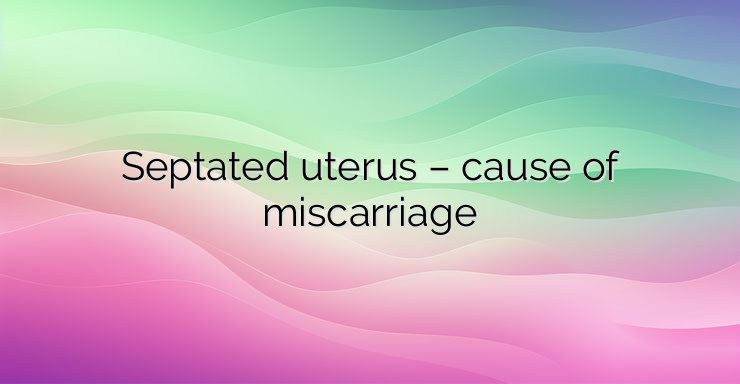A septate uterus is a congenital abnormality in which a membrane runs down the middle of the uterus, dividing it into two parts. This membrane is called the septum and can vary in thickness and length. It starts at the top of the uterus and can spread to the cervix and sometimes to the vagina. A normal uterus is an upside-down pear-shaped cavity. A septate uterus is rare but one of the most common uterine abnormalities. Its frequency accounts for approximately 35% to 90% of congenital anomalies of the uterus. Having a septate uterus is not life-threatening and does not cause any long-term health complications. However, it can increase the risk of miscarriage and is a possible cause of frequent pregnancy loss. One study shows that the miscarriage rate in women with a septal uterus is about 35%. By comparison, the miscarriage rate in women with a normal uterine shape is about 10% to 20%. However, miscarriages do not occur in all patients. Most women with a septate uterus are asymptomatic. Some potential symptoms of a septate uterus include: Frequent miscarriages; Painful menstruation; Pelvic pain. A septate uterus is congenital. During fetal development, two ducts (called Müllerian ducts) in the uterus did not fuse properly. In a normal uterus, these two ducts merge together to form a single uterine cavity. Instead, in a septate uterus, they create a tissue membrane along the midline. A prolapsed uterus usually does not affect menstruation, but it can sometimes cause a more painful menstrual cycle. What are the complications of treating a septate uterus? Risks associated with removing the septum that separates the uterus include: Abnormal bleeding; Infection; Perforation of the uterus; Damage to the cervix. References: 1. Homer HA, Li TC, Cooke ID. The septate uterus: a review of management and reproductive outcome. Fertil Steril. 2000 Jan; 2. Kenda Šuster N, Gergolet M. Does hysteroscopic metroplasty for septate uterus represent a risk factor for adverse outcome during pregnancy and labor. Gynecol Surg. 3. LaMonica R, Pinto J, Luciano D, Lyapis A, Luciano A. Incidence of Septate Uterus in Reproductive-Aged Women With and Without Endometriosis. J Minim Invasive Gynecol. 4. Practice Committee of the American Society for Reproductive Medicine. Uterine septum: a guideline. (https://www.fertstert.org/article/S0015-0282%2816%2961281-5/pdf)


Leave a Reply